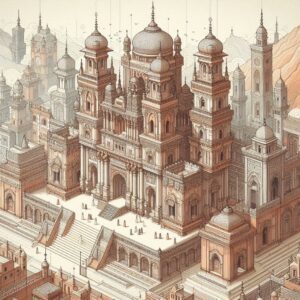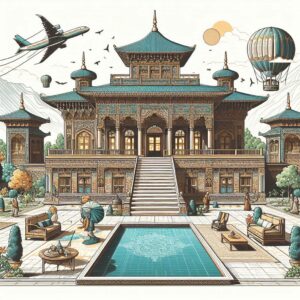Q. Describe the characteristics of post-Mauryan period architecture.
Answer:
The architecture of the Maurya period received royal patronage, so with the fall of the Maurya Empire, that art became extinct. But the architecture of the Maurya period received patronage from the merchant class and this merchant class promoted Buddhism. Vedic religion being yajna-based was causing harm to the agriculture-based economy. Agriculture was prohibited in Jainism, due to this the merchant class supported Buddhism and non-Aryan elements were included in architecture. Statues of Yakshas and Yakshinis started being made on stupas, apart from this, animals were associated with Mahatma Buddha. Lotus and snakes started being depicted on stupas.

Kushan period architecture
| Gandhara art | Madhura Arts |
|
|

Q. The concept of devotion in the Gupta period reflects a special social relationship. Explain.
Answer:
Bhakti is a religious sentiment but it also reflects social relations. The concept of Bhakti reflects the feudalistic system based on Gupta period society. Just as a devotee was expected to be completely devoted to God, similarly a farmer was expected to be completely devoted to the feudal lords, and feudal lords were expected to show their loyalty to the rulers. Due to land grants, the feudal lords got control over the land; they were the main productive class but they received a very small share of the production. This system was based on the principle of nishkamkarma, meaning that the farmer produces but does not expect a share in the produce. Due to this, the majority of India was exploited. This was the reason that at the time of the Muslim invasion, this class did not strongly oppose it. In this way, it can be believed that due to devotion a new religion emerged but the majority of the people remained deprived of this religion also.

Q. What kind of differences are there in the basic elements of Vedic religion and Gupta religion? Discuss.
Answer:
Vedic religion was polytheistic, materialistic, and based on utilitarianism. The basic elements were the worship of Vedic mantras and the practice of Yagya, although the Upanishads are considered to be the beginning of Indian philosophy. In the Mundakopanishad, Yagya has been compared to a broken boat. Due to the propagation of the Mahayana sect, the practice of incarnation became prevalent in Vedic religion even in the Gupta period. There is mention of 10 incarnations of Vishnu and 28 incarnations of Shiva and these incarnations were related to the non-Vedic culture. The symbols of Buddhism had to be adopted in Vedic religion, for example, in Buddhism, the elephant was the symbol of Buddha’s conception, in Vedic religion it was considered as Indra’s elephant Airavat. Similarly, the bull had to be accepted as Shiva’s carrier Nandi, and the lion has been described as Durga’s vehicle. Similarly, worship of the Peepal tree, snake worship, lotus flower, worship of Yaksha-Yakshinis, and worship of gods and goddesses became the basic features of the Gupta religion which were included from the non-Vedic culture.